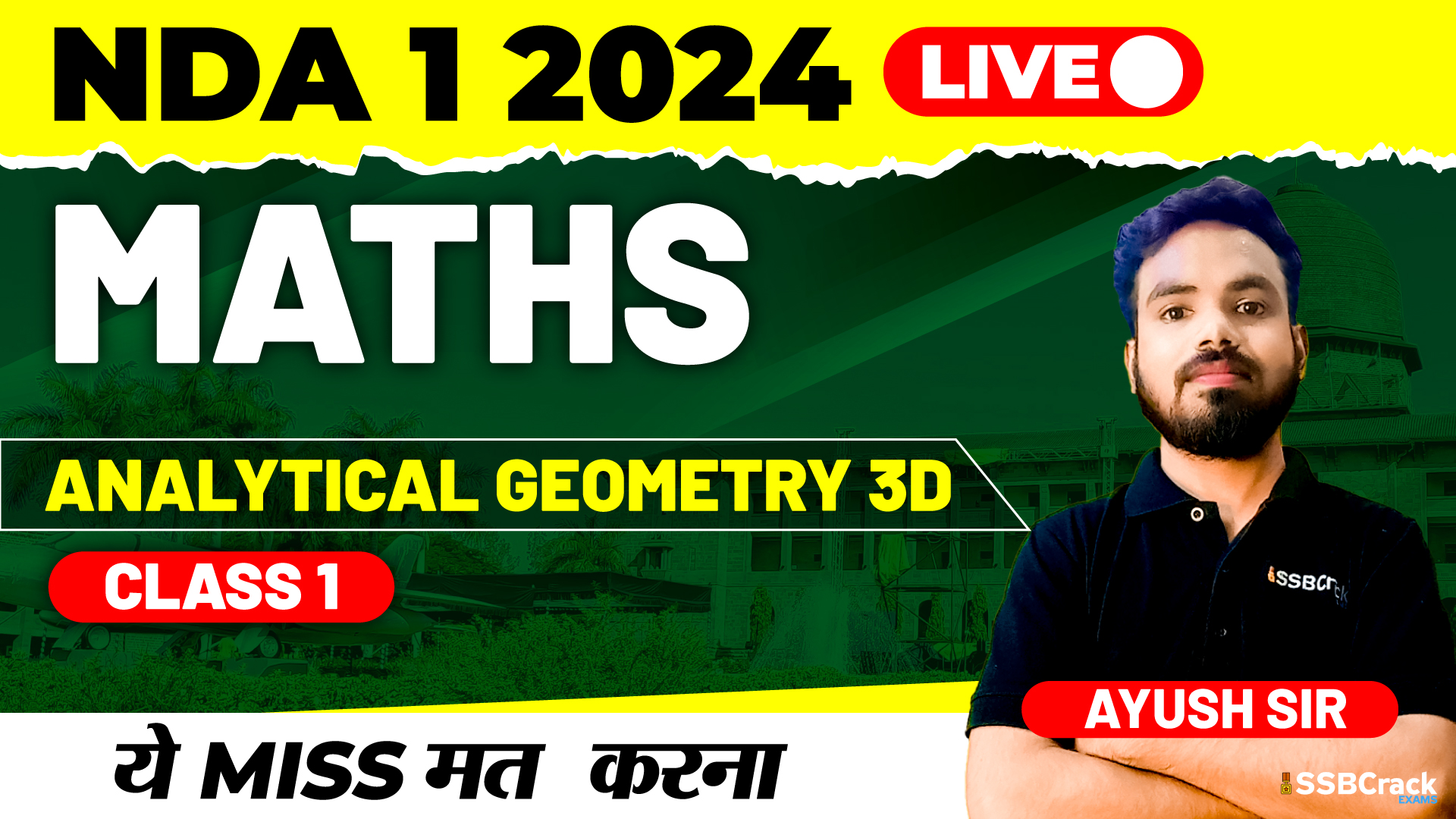In the expansive world of mathematical exploration, 3D Geometry Class 1 emerges as a compass guiding aspirant through the intricacies of spatial dimensions. As candidates prepare for the NDA 1 2024 Exam, this live class becomes a pivotal session where fundamental concepts such as octants, direction cosines, section formula, and angles between lines take center stage. This article navigates through the key highlights of Class 1, shedding light on how participants embark on a journey to navigate the complexities of 3D space.
Understanding Octants:
Class 1 laid the groundwork by introducing participants to the concept of octants. As candidates step into the realm of three-dimensional space, they encounter a spatial division into eight octants. The instructor delved into the significance of these octants, exploring how they partition space into distinct regions and how coordinates are assigned within this framework. This foundational understanding provides a crucial spatial orientation for solving problems in 3D Geometry.
Direction Cosines: Guiding Vectors in Space:
The class seamlessly transitioned into the realm of direction cosines, a key element for describing the orientation of vectors in three-dimensional space. Participants grasped the essence of direction cosines as numerical coefficients that define the direction of a vector. The instructor provided insights into how these cosines serve as directional indicators, allowing participants to visualize the orientation of vectors within the three-dimensional coordinate system.
Section Formula: Navigating Points in Space:
Class 1 introduced the section formula, a versatile tool for navigating points within 3D space. Participants explored how the section formula facilitates the determination of the coordinates of a point that divides a line segment in a given ratio. The class unfolded the mechanics of this formula, showcasing its application in solving problems related to dividing lines in three-dimensional geometry.
Angle Between Two Lines: Measuring Spatial Inclination:
The live class delved into the intricacies of measuring the angle between two lines in three-dimensional space. Participants encountered the concept of direction ratios and explored how these ratios pave the way for determining the angle between lines. The instructor provided insights into the geometric interpretation of this angle, enabling participants to conceptualize and visualize spatial inclinations between lines in 3D geometry.
Conceptual Examples for In-Depth Understanding:
Class 1 maintained a commitment to clarity through conceptual examples that delved into the nuances of octants, direction cosines, section formula, and angles between lines. Each concept was accompanied by detailed examples, allowing participants to internalize the application of these principles in diverse problem-solving scenarios. These illustrative examples not only reinforced conceptual understanding but also demonstrated the practical applications of 3D geometry concepts.
Interactive Learning Environment:
Fostering an interactive learning environment, Class 1 encouraged participant engagement through questions, discussions, and problem-solving sessions. This collaborative approach not only clarified doubts but also enriched the learning experience by incorporating diverse perspectives and problem-solving approaches. The interactive nature of the class created a dynamic space for participants to actively engage with the material and deepen their understanding.
Connecting Concepts to Competitive Exam Scenarios:
The live class strategically connected the dots between learned concepts and their application in competitive exam scenarios. Participants were provided with insights into the specific ways 3D geometry concepts are tested in the NDA 1 2024 Exam. This contextualization helped bridge the gap between theoretical understanding and effective application during examination conditions, preparing candidates for the spatial challenges presented in the exam.
Strategies for Efficient Problem Solving:
Recognizing the importance of efficient problem-solving, Class 1 incorporated strategies for optimal time utilization during the exam. Participants were guided on how to navigate through 3D geometry problems judiciously, maximizing their efficiency without compromising accuracy. This practical advice aimed to equip participants with the tools needed to tackle spatial problems within the time constraints of the exam.
Practical Problem-Solving Sessions:
To further enrich the learning experience, Class 1 incorporated practical problem-solving sessions. Participants actively engaged with the instructor, unraveling the intricacies of specific questions, clarifying doubts, and sharing diverse problem-solving approaches. This interactive dynamic not only bolstered understanding but also created a collaborative space for collective learning.
Conclusion:
In conclusion, NDA 1 2024 Exam Math 3D Geometry Class 1 stands as a foundational stepping stone for mastering the complexities of spatial dimensions. By introducing concepts such as octants, direction cosines, section formula, and angles between lines, participants embark on a journey to navigate the spatial landscape with confidence. As participants internalize the insights gained in this class, they not only prepare for the exam but also cultivate problem-solving skills that extend far beyond the realm of academic assessments, ensuring a solid foundation for future mathematical explorations.



















